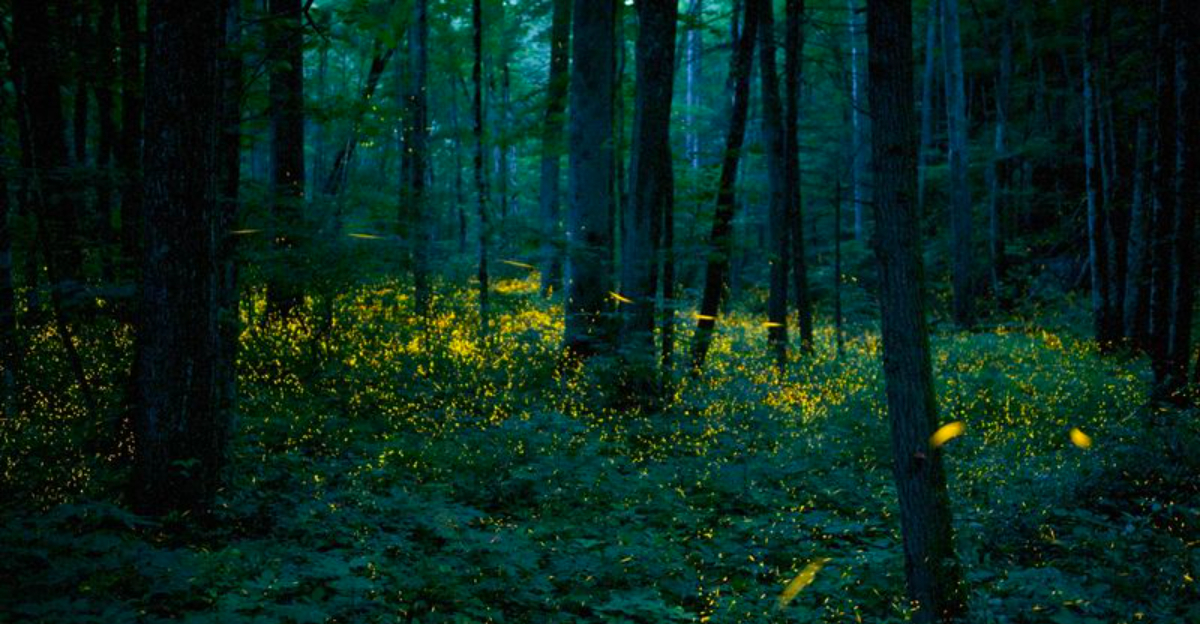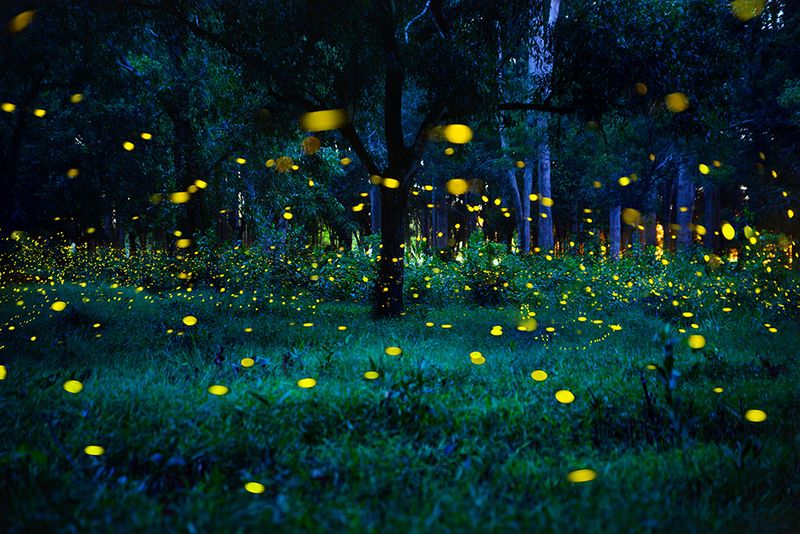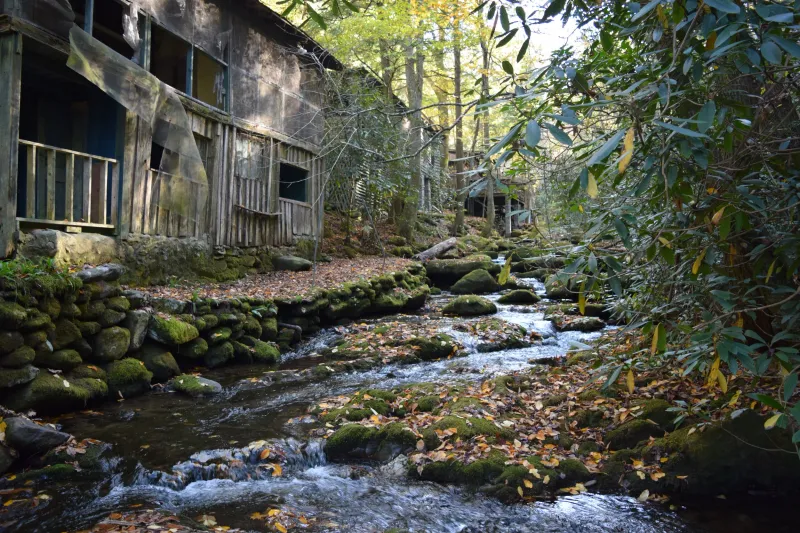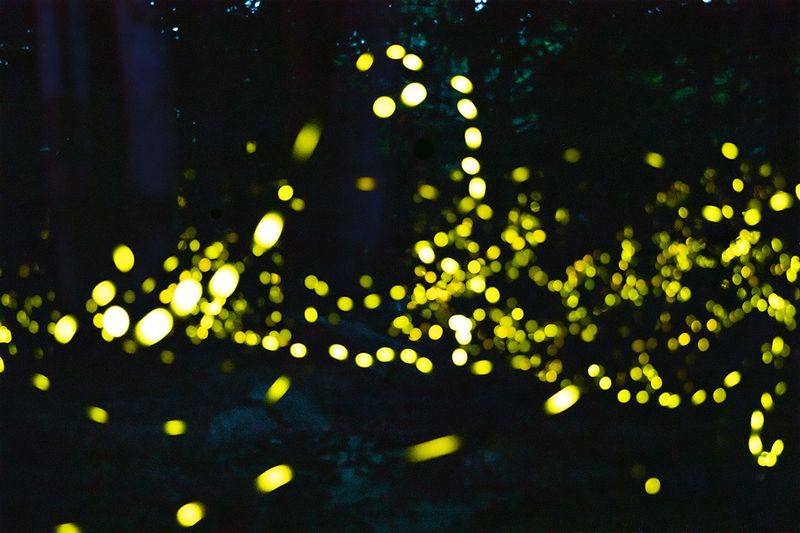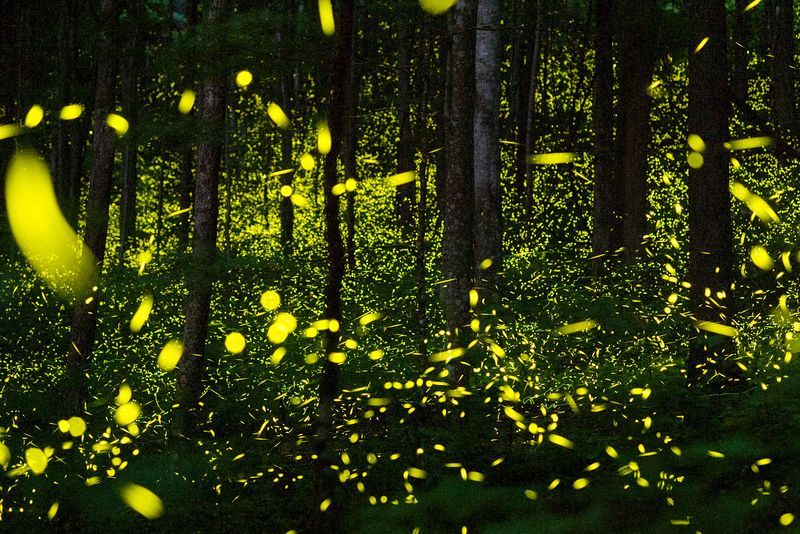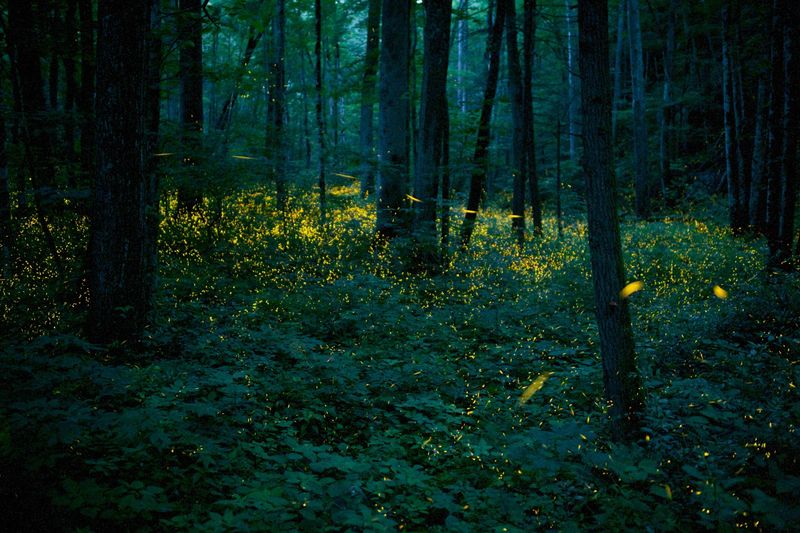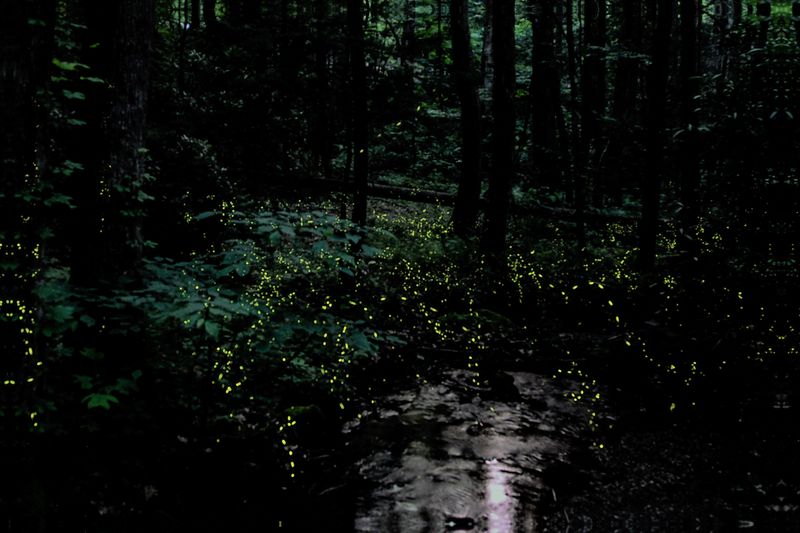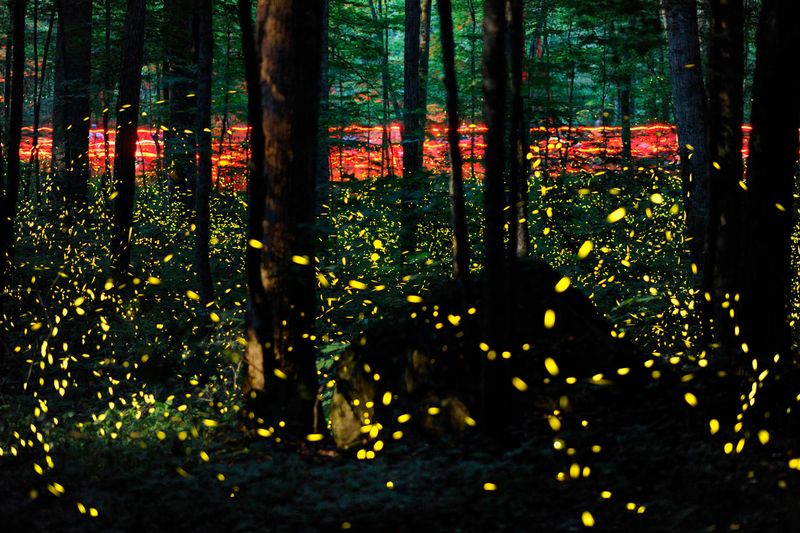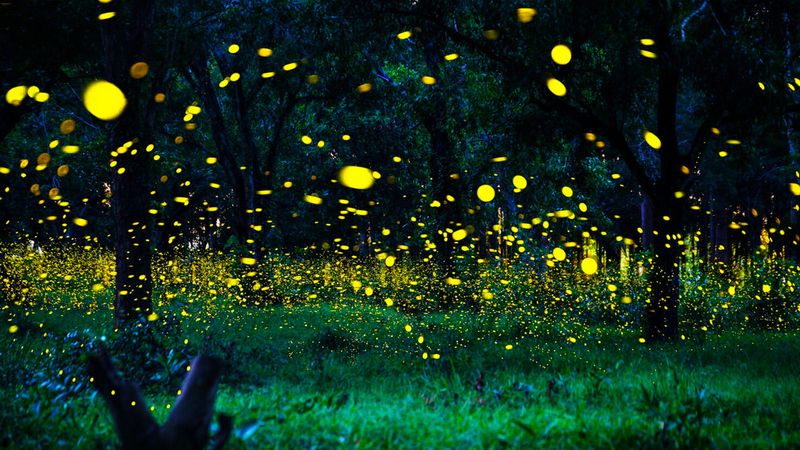Every summer in Tennessee, nature puts on a show that seems almost too magical to be real. Deep in the Great Smoky Mountains, thousands of fireflies light up the forest in perfect rhythm, blinking together like a living light orchestra. People from all over the world enter a lottery just for the chance to witness this rare wonder, and those lucky enough to attend never forget it.
1. The Stars of the Show: Photinus carolinus
Meet the rare and remarkable Photinus carolinus, a firefly species unlike any other you’ve seen in your backyard. While most fireflies blink randomly across the night sky, these special insects flash in perfect harmony, creating mesmerizing waves of light that sweep through the darkness.
Scientists have studied this curious behavior for years. They believe the males synchronize their flashes to stand out from the competition and attract females more effectively.
Imagine hundreds of tiny performers all hitting their mark at exactly the same moment. That’s what makes this species so extraordinary and worth the journey to Tennessee’s misty mountains.
2. Where the Magic Happens: Elkmont, Tennessee
Nestled within the Great Smoky Mountains National Park, Elkmont serves as the main stage for this natural light show. This historic area offers the ideal combination of dense forest canopy, cool streams, and deep darkness that synchronous fireflies desperately need to thrive.
The surrounding riverbanks and humid microclimate create a perfect nursery for firefly larvae. Few locations in North America can match these conditions, which is why Elkmont has become world-famous among nature enthusiasts.
Walking through these ancient woods feels like stepping into an enchanted storybook. When the fireflies begin their synchronized dance, you’ll understand why people travel thousands of miles to stand in this exact spot.
3. When to Visit: A Brief Window of Wonder
Patience and perfect timing are your best friends when planning this adventure. The synchronous fireflies typically perform their light show for only two weeks each year, usually between late May and early June, depending on temperature and rainfall patterns.
Weather plays a huge role in when the display peaks. Warmer springs can trigger earlier shows, while cooler conditions might delay the spectacle by several days.
The flashing usually begins around dusk, shortly after sunset, and continues for several hours into the night. Mark your calendar carefully, because missing this narrow window means waiting another full year for your next chance to witness the magic.
4. A Ticket to Glow: The National Park Lottery
Getting to see the fireflies isn’t as simple as just showing up. Because tens of thousands of people want to experience this phenomenon, the National Park Service created a lottery system to manage the crowds and protect the fragile ecosystem.
Each year, thousands of hopeful visitors submit applications online. Only about 120 vehicles receive permits each night, ensuring the habitat doesn’t become overwhelmed by human activity.
The lottery opens several weeks before the peak season, and winners are notified by email. While the odds might seem tough, many people apply for multiple dates to increase their chances of securing one of these golden tickets to nature’s greatest light show.
5. What the Experience Is Really Like
As darkness settles over the forest, an almost sacred silence falls over the crowd. Your eyes adjust to the blackness, and suddenly—a single green flash appears, then another, then dozens more.
Within minutes, thousands of tiny lights begin pulsing together in perfect rhythm, creating waves of bioluminescence that roll through the trees like a slow-motion fireworks display. The synchronized bursts happen every few seconds, building in intensity as more males join the chorus.
Many visitors describe feeling emotional watching this natural phenomenon. There’s something deeply moving about witnessing such perfect coordination in the wild, a reminder that nature holds mysteries far more beautiful than anything humans can create.
6. Respecting the Glow: Rules of the Forest
Protecting this delicate experience requires everyone’s cooperation and respect. Visitors must use only red-filtered flashlights, as white light and camera flashes can disorient the fireflies and disrupt their mating ritual completely.
Staying on designated trails prevents damage to vegetation and protects firefly larvae developing in the soil. Silence is equally important—loud noises can scatter the insects and ruin the experience for everyone present.
These rules might seem strict, but they’re essential for preserving the magic. The peaceful atmosphere actually enhances the experience, allowing you to fully immerse yourself in nature’s choreography without modern distractions breaking the spell of this extraordinary moment.
7. Why It’s So Rare
Synchronous fireflies exist in only a handful of locations worldwide, making this phenomenon exceptionally precious. Besides the Smoky Mountains, similar displays occur in parts of Southeast Asia and a few other spots in the Appalachian region, but nowhere else comes close to Elkmont’s spectacular show.
The specific environmental conditions required—high humidity, complete darkness, particular vegetation, and stable temperatures—rarely align perfectly. This rarity makes the Smokies the premier destination for witnessing synchronized bioluminescence in North America.
Photographers, scientists, and nature lovers consider this a bucket-list experience precisely because of its scarcity. You’re witnessing something that 99% of Earth’s population will never see in person, a truly unique gift from the natural world.
8. Conservation in Action
Behind the scenes, park rangers and scientists work tirelessly to monitor the firefly population and minimize human impact. Every year, researchers track visitor numbers, vegetation health, and firefly activity to ensure the habitat remains healthy for future generations.
Overcrowding poses serious threats—trampled plants, compacted soil, and artificial light pollution can all harm firefly larvae and disrupt breeding patterns. The lottery system represents a careful balance between public access and environmental protection.
Your participation in following guidelines directly contributes to conservation success. By respecting the rules and spreading awareness about these fragile insects, you become part of a larger effort to preserve one of nature’s most enchanting displays for your children and grandchildren to enjoy.
